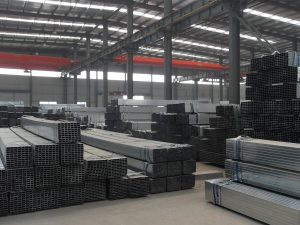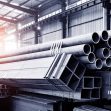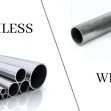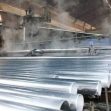The role of steel in building innovation
In the realm of modern architectural design and construction, steel has emerged as a versatile and indispensable material. Its strength, durability, and adaptability have paved the way for innovative structures that push the boundaries of what was once thought possible. From towering skyscrapers to intricate bridge designs, the applications of steel are vast and ever-evolving.
One of the most prominent examples of steel’s impact on modern architecture is the use of black iron steel pipes. These sturdy pipes have become an integral component in various building systems, including plumbing, heating, and ventilation. Their exceptional strength and resistance to corrosion make them an ideal choice for transporting fluids and gases, ensuring the structural integrity and functionality of buildings.
Furthermore, metal pipes have revolutionized the way architects and engineers approach structural design. The ability to create complex shapes and forms using steel has opened up new avenues for artistic expression and architectural creativity. From curved and twisted facades to intricate lattice structures, the malleability of steel allows designers to bring their most daring visions to life.
Another essential application of steel in modern construction is the use of carbon steel pipes. These pipes are renowned for their high tensile strength and resistance to extreme temperatures, making them invaluable in industrial settings, power plants, and large-scale infrastructure projects. Their versatility extends beyond their practical applications, as they can also be incorporated into architectural elements, lending a sleek and modern aesthetic to buildings.

Moreover, conduit pipes have become an integral part of modern electrical and communication systems. These steel pipes provide a safe and reliable means of housing and protecting cables, ensuring the efficient distribution of power and data throughout a building. Their durability and fire-resistance make them a crucial component in ensuring the safety and functionality of any modern structure.
The use of steel in modern architecture and construction is not limited to functional applications; it also plays a vital role in achieving sustainability goals. Steel is highly recyclable, reducing the environmental impact of construction projects and promoting a circular economy.
Additionally, the inherent strength of steel allows for the creation of lightweight yet robust structures, minimizing material usage and enhancing energy efficiency.
As architects and engineers continue to push the boundaries of design and innovation, steel will undoubtedly remain a cornerstone material. Its versatility, strength, and adaptability make it an invaluable resource in realizing the most ambitious and avant-garde architectural visions, shaping the skylines of tomorrow and redefining the way we perceive and interact with the built environment.
Tel: +86 18202256900 Email: steel@tjdpbd.com









